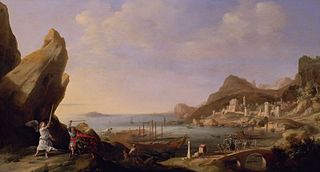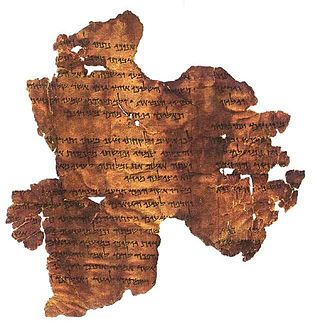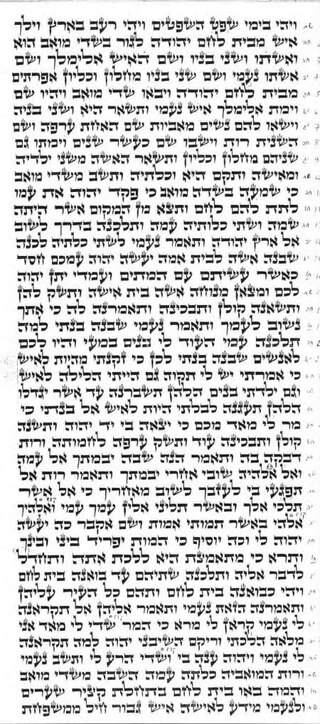
Balaam is a diviner in the Torah (Pentateuch) whose story begins in Chapter 22 of the Book of Numbers. Ancient references to Balaam consider him a non-Israelite, a prophet, and the son of Beor. King Balak of Moab offered him money to curse Israel, but Balaam blessed the Israelites instead, as dictated by God. Nevertheless, he is reviled as a "wicked man" in both the Torah and the New Testament. According to the Book of Revelation, Balaam told King Balak how to get the Israelites to commit sin by enticing them to copulate with foreign women and worship idols. The Israelites fell into transgression due to these traps and God unleashed a deadly plague upon them as a result.

Balak was a king of Moab described in the Book of Numbers in the Hebrew Bible, where his dealings with the prophet Balaam are recounted. Balak tried to engage Balaam for the purpose of cursing the migrating Israelite community. On his journey to meet the princes of Moab, Balaam is stopped by an angel of the lord after beating his donkey. He tells the angel he will return home: "I have sinned, for I did not know that you stood against me on the road". The angel instructs Balaam to attend the meeting with the princes of Moab but to "say only what I tell you". According to Numbers 22:2, and Joshua 24:9, Balak was the son of Zippor.

Jezebel was the daughter of Ithobaal I of Tyre and the wife of Ahab, King of Israel, according to the Book of Kings of the Hebrew Bible.

Matthew 14 is the fourteenth chapter in the Gospel of Matthew in the New Testament section of the Christian Bible. It continues the narrative about Jesus' ministry in Galilee and recounts the circumstances leading to the death of John the Baptist.

Balak is the 40th weekly Torah portion in the annual Jewish cycle of Torah reading and the seventh in the Book of Numbers. In the parashah, Balak son of Zippor, king of Moab, tries to hire Balaam to curse Israel, Balaam's donkey speaks to Balaam, and Balaam blesses Israel instead. The parashah constitutes Numbers 22:2–25:9. The parashah is made up of 5,357 Hebrew letters, 1,455 Hebrew words, 104 verses, and 178 lines in a Torah Scroll.

According to the Hebrew Bible, Phinehas or Phineas was a priest during the Israelites' Exodus journey. The grandson of Aaron and son of Eleazar, the High Priests, he distinguished himself as a youth at Shittim with his zeal against the heresy of Peor.

Revelation 1 is the first chapter of the Book of Revelation or the Apocalypse of John in the New Testament of the Christian Bible. The book is traditionally attributed to John the Apostle, but the precise identity of the author is a point of academic debate. This chapter contains the prologue of the book, followed by the vision and commission of John.

2 Corinthians 3 is the third chapter of the Second Epistle to the Corinthians in the New Testament of the Christian Bible. It is authored by Paul the Apostle and Timothy in Macedonia in 55–56 BC. Biblical commentator Heinrich Meyer emphasises that the use of the plural 'we' in 2 Corinthians 3:2 and 2 Corinthians 3:6 includes Timothy in the writing of the letter.

2 Corinthians 11 is the eleventh chapter of the Second Epistle to the Corinthians in the New Testament of the Christian Bible. It is authored by Paul the Apostle and Timothy in Macedonia in 55–56 CE. According to theologian Heinrich August Wilhelm Meyer, chapters 10–13 "contain the third chief section of the Epistle, the apostle's polemic vindication of his apostolic dignity and efficiency, and then the conclusion".

James 5 is the fifth chapter of the Epistle of James in the New Testament of the Christian Bible. The author identifies himself as "James, a servant of God and of the Lord Jesus Christ" and the epistle is traditionally attributed to James the brother of Jesus, written in Jerusalem between 48 and 61 CE. Alternatively, some scholars argue that it is a pseudographical work written after 61 CE. This chapter contains a warning to the rich and an exhortation to be patient until the coming of the Lord.

Revelation 3 is the third chapter of the Book of Revelation or the Apocalypse of John in the New Testament of the Christian Bible. The book is traditionally attributed to John the Apostle, but the precise identity of the author remains a point of academic debate. This chapter contains messages to the churches of Sardis and Philadelphia and Laodicea, three of the seven churches of Asia located in modern-day Turkey, continuing from the messages for the other four churches which appear in chapter 2.

Hebrews 9 is the ninth chapter of the Epistle to the Hebrews in the New Testament of the Christian Bible. The author is anonymous, although the internal reference to "our brother Timothy" causes a traditional attribution to Paul, but this attribution has been disputed since the second century and there is no decisive evidence for the authorship. This chapter contains the exposition about the ministry of the first covenant and Christ's effective sacrifice.

Revelation 10 is the tenth chapter of the Book of Revelation or the Apocalypse of John in the New Testament of the Christian Bible. The book is traditionally attributed to John the Apostle, but the precise identity of the author remains a point of academic debate. This chapter and the first part of the next chapter report two episodes which intervene between the sounding of the sixth and seventh trumpets.

Hosea 1 is the first chapter of the Book of Hosea in the Hebrew Bible or the Old Testament of the Christian Bible. This book contains the prophecies attributed to the prophet Hosea son of Beeri, and this chapter especially sets forth the spiritual whoredom of Israel by symbolical acts. It is a part of the Book of the Twelve Minor Prophets.

Micah 6 is the sixth chapter of the Book of Micah in the Hebrew Bible or the Old Testament of the Christian Bible. This book contains the prophecies attributed to the prophet Micah, and is a part of the Book of the Twelve Minor Prophets.

Ruth 1 is the first chapter of the Book of Ruth in the Hebrew Bible or the Old Testament of the Christian Bible, part of the Ketuvim ("Writings"). This chapter contains the story of how Elimelech, Ruth's father-in-law, driven by famine, moved into Moab, and died there ; Naomi returning home, Ruth accompanies her ; They came to Bethlehem.

2 Kings 3 is the third chapter in the second part of the Books of Kings in the Hebrew Bible or the Second Book of Kings in the Old Testament of the Christian Bible. The book is a compilation of various annals recording the acts of the kings of Israel and Judah by a Deuteronomic compiler in the seventh century BCE, with a supplement added in the sixth century BCE. After a short introduction to the reign of the last king of Israel from the Omride dynasty, Jehoram the son of Ahab, this chapter records the war of the coalition of the kings of Israel, Judah, and Edom, against Mesha the king of Moab with some contribution of Elisha the prophet. Another view of the events in this chapter is notably provided by the inscription on the Mesha Stele made by the aforementioned king of Moab in c. 840 BCE.

2 Kings 9 is the ninth chapter of the second part of the Books of Kings in the Hebrew Bible or the Second Book of Kings in the Old Testament of the Christian Bible. The book is a compilation of various annals recording the acts of the kings of Israel and Judah by a Deuteronomic compiler in the seventh century BCE, with a supplement added in the sixth century BCE. This chapter records Jehu's anointing as the next king of Israel and his assassinations of Jehoram the king of Israel, Ahaziah the king of Judah and Jezebel the queen mother of Israel. The narrative is a part of a major section 2 Kings 9:1–15:12 covering the period of Jehu's dynasty.

2 Kings 10 is the tenth chapter of the second part of the Books of Kings in the Hebrew Bible or the Second Book of Kings in the Old Testament of the Christian Bible. The book is a compilation of various annals recording the acts of the kings of Israel and Judah by a Deuteronomic compiler in the seventh century BCE, with a supplement added in the sixth century BCE. This chapter records Jehu's massacres of the sons of Ahab, the kinsmen of Ahaziah the king of Judah and the Baal worshippers linked to Jezebel. The narrative is a part of a major section 2 Kings 9:1–15:12 covering the period of Jehu's dynasty.

1 Kings 21 is the 21st chapter of the Books of Kings in the Hebrew Bible or the First Book of Kings in the Old Testament of the Christian Bible. The book is a compilation of various annals recording the acts of the kings of Israel and Judah by a Deuteronomic compiler in the seventh century BCE, with a supplement added in the sixth century BCE. This chapter belongs to the section comprising 1 Kings 16:15 to 2 Kings 8:29 which documents the period of Omri's dynasty. The focus of this chapter is the reign of king Ahab in the northern kingdom.

















